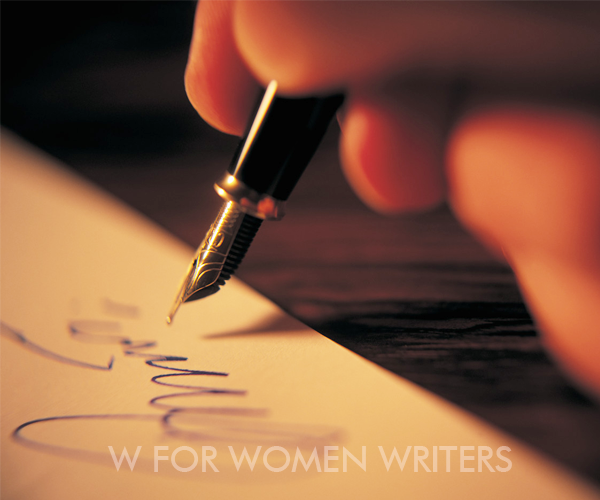From Arundhati Roy to Taslima Nasrin, female writers have received flak from society and world for their views and expressions of her thoughts on various compelling issues.
“My case is different. I am a man!” said Mr. Aslam when Ismat Chughtai (1911-1991)- an Urdu woman writer, complained about the obscene content in author Aslam’s work ‘Gunah Ki Ratein’. This reflects the double standards of the society.
Many female writers like Ismat Chughtai have suffered gender discrimination and censorship for writing boldly about the subjects like religion, faith and sexuality. Ismat Chughtai wrote in 1941, a short story named Lihaf, translated as The Quilt. It depicts the nuances and subtleties of the lesbian relationship between a begum and her maid. The work was sued next year under the charge of obscenity. Chughtai was acquitted for couple of years. During these years, she had to face a lot of stress and infamy. Chughtai writes about the Lihaf case in her memoir Kaghazi Hai Pairahan (1994),
“Since then I have been branded as a bold and obscene writer. I was branded as the purveyor of sex. It’s only in the last couple of years that younger generation has recognized that I am a realistic and not an obscene writer.” Many people pinpointed the obscene lines in the story. Chughtai writes about the attack on her work in Kaghazi Hai Pairahan, “In my stories, I put down everything with objectivity. Now if some people find them obscene, let them go to hell. It’s my belief that experiences can never be obscene if they are based on authentic realities of life.”
When woman tried to express herself through the pen, patriarchy played the Big Brother and the Thought Police. For a society steeped in male chauvinism, the woman is a machine for child bearing in body; and in spirit a shy, silent, submissive, docile weakling. Patriarchal society believes that the woman has mere body and no intellect. Brain is man’s forte. Hence, men wield power and women exist powerless. When the woman takes pen, questions and challenges society and its norms, these power positions are reversed. Male writers consider this a challenge and a danger to their authority. There were many other women before and after Chughtai, who could not write because they were women. They wrote with amazing candidness and honesty. Their writings were censored either by their families or by society. The parents do not let the woman get education.
The authors like Baby Halder and Nalini Jameela write how their parents did not let them study in their autobiographies respectively A Life Less Ordinary (2006) and Sex Worker (2005; English translation by J. Devika as The Autobiography of a Sex Worker).
Chughtai’s role model Rashid Jahan (1905-1952) was also succumbed to censorship based on gender discrimination. She co-authored the collection of Urdu short stories Angaarey (December 1932), which was censored for obscenity and blasphemy. At that time, Ismat Chughtai was in college. She and her classmates read the story and ransacked the office of the religious leader Maulavi Ahrarvi who had presumably caused the ban. Chughtai also wrote blazing letter of protest against the denunciation in the newspaper. Chughtai wrote about the Angaarey slander in Kaghazi Hai Pairahan, “We looked for obscenity and vulgarity but didn’t find any”.
A renowned Indian English writer Kamla Das (1934-2009) had also faced censorship from her family. She suffered hatred of her family and society because she wrote openly about her love interest in her autobiography My Story (1976). She writes in the Preface of My Story, “My relatives were embarrassed. I had disgraced my well-known family by telling my readers that I had fallen in love with a man other than my lawfully wedded husband. When I went for a short vacation to my home state, I received no warmth. This book has cost me many things I held dear, but I do not, for a moment, regret having written it.”
Eminent Hindi journalist Mridula Garg (1938) was arrested for her novel Chittacobra (1979). The book was banned because of graphic description of sexual interaction. Garg spoke to The Hindu while describing the incident of her arrest: “That was one of their objectives; the other was to thwart my creative work by causing me mental anguish. Books and writers are persecuted not to stop people from reading but to stop writers from writing freely.”
These are just a few examples of censorship on women’s writings. Almost every woman writer, at some stage, in some way, has suffered the censorship from her own self, from society, from politics and religion while writing, while expressing her voice.
Marathi saint poets Sakhubai and Janabai, 20th century writers Malti Bedekar aka Vibhavari Shirurkar in Maharashtra, Lalitambika Antharjanam in Kerala, Ashapoorna Devi in Bangla, Jeelani Banu, Quarrat-ul-ain Hyder, Arundhati Roy and the list can be long.
Taslima Nasreen’s (1962) novel Lajja (1993), Gujarati poet Saroop Dhruv’s (1948) plays Raaj Parivartan and Suno Nadi Kya Kaheti Hai were censored more for communal and political rather than gender-related reasons.
The gender discrimination and censorship is injustice to women writers who want to express their feelings and opinions. It is a way to stifle the freedom of expression. It is one of the many blemishes on our largest democracy called India.






,